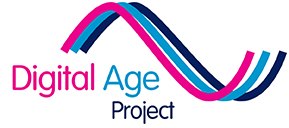Our toolkits are designed to work for informal and formal learning alike.
This part of the toolkit looks at how you can use the learner cards to deliver a formal learning course.
How you choose to teach digital literacy is a matter for you. However, it’s
always useful to have some support. This may be support for you to increase
your subject knowledge or it may be support when delivering with learners.
The problem with developing a course for digital literacy is that everything
changes; We could make a guide on how to use Facebook, but it would have
changed before we got it published. The second problem is that technology
almost always goes wrong in a way you don’t expect. Digital Literacy has to be
about resilience and learning how to find solutions for yourself.
That’s why, for this course, we’ve used Learner Cards. The cards take the
form of short activities. Rather than providing step-by-step instructions, they
provide some basic information and then links to videos or websites that can
support them further.
The links are presented as “QR Codes”. At first, this may look confusing. But
there are sound reasons for doing it this way.
- Intimidating as a QR Code might look, it’s not as intimidating as a very
long link - QR Codes mean that people learning on mobile devices or their own
devices can access the links without having to type in long URLs - QR Codes can be used to send other information too (such as contact
details, WiFi passwords etc)
There are plenty of delivery ideas, possible routes and more information in the “Using The Cards” tab.
Download “Delivery Ideas”
Download “Possible learning routes”
Download “Intergenerational Learning”
The following will help you understand how to use and adapt the learner cards:
Download “Using the cards”
Download “Using QR Codes”
Download “Making QR Codes”
The following may help you in your delivery:
Download “How to project a tablet”
Download “Checking your connectivity”
The following will be of use to you or your learners when delivering:
Download “Digital Literacy Glossary”
See also: Learner Cards
